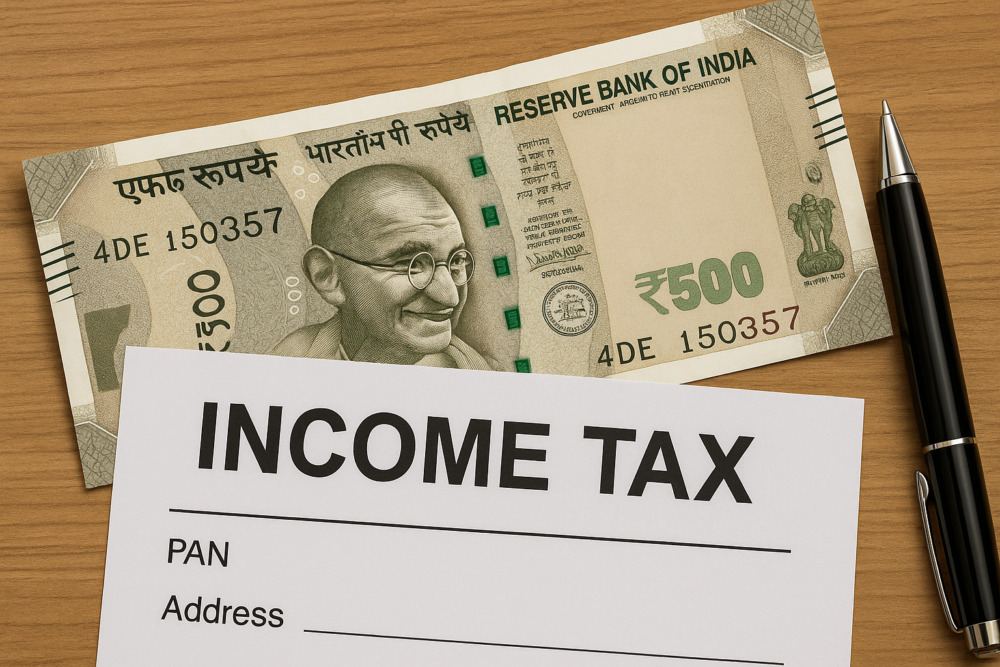Deadline Just A Day Away
The clock is ticking for millions of Indian taxpayers, as the final date to file income tax returns (ITR) for the assessment year 2025–26 is set for Sunday, September 15, 2025. Despite repeated appeals from individuals and associations for extra time, the Central Board of Direct Taxes (CBDT) has refused to grant another extension. Earlier this year, the usual deadline of July 31 was pushed to May 27, but since then, no further relief has been provided.
This cutoff primarily applies to taxpayers who are not required to undergo a tax audit. That includes individuals, Hindu Undivided Families (HUFs), and small entities filing under ITR forms 1 through 4. Those under audit enjoy a later filing date.
Step-By-Step Process To File ITR
Filing an ITR has become more streamlined with the online income tax portal, but it still demands attention to detail. Taxpayers must log in using their Permanent Account Number (PAN) as their user ID, followed by a secure password. Once inside, they need to:
-
Select the relevant assessment year (2025–26).
-
Choose their filing status (individual, HUF, or entity).
-
Pick the appropriate ITR form.
-
Cross-check and confirm personal and financial details.
-
Pay any pending tax dues.
-
Submit the return and complete e-verification.
E-verification is essential—without it, the return is considered invalid, even if all other steps are completed.
Penalty For Missing The Deadline
Filing after the September 15 deadline comes at a cost. Taxpayers with an annual income above ₹5 lakh will face a penalty of ₹5,000 under Section 234F of the Income Tax Act. For those earning less, the fine is reduced to ₹1,000.
Additionally, belated or revised returns can still be filed until December 31, 2025. Updated returns (ITR-U) provide an even longer window, allowing corrections or disclosures until March 31, 2030.
However, taxpayers who owe money to the department must tread carefully. Interest at the rate of 1% per month (or part thereof) will be charged on unpaid amounts, calculated from the due date until the date of actual filing, as per Section 234A.
Refunds Linked To Timely E-Verification
One of the most common issues taxpayers face is the delay or denial of refunds due to failure to e-verify. Last year, while 5.34 crore returns were processed smoothly, nearly two crore taxpayers received notices for errors or incomplete filings. Refunds are automatically halted if the return is not verified within 30 days of filing.
In extreme cases, non-verification could even lead to a penalty of up to ₹5,000. Hence, ensuring accuracy during filing and completing the e-verification process is critical for those expecting refunds.
Thank you taxpayers & tax professionals for helping us reach the milestone of 6 crore Income Tax Returns (ITRs) as of now and still counting.
To assist taxpayers for ITR filing, tax payment and other related services, our helpdesk is functioning on a 24×7 basis, and we are… pic.twitter.com/XBJUrzoBjd
— Income Tax India (@IncomeTaxIndia) September 13, 2025
Filing Statistics So Far
According to the latest official data, over six crore ITRs have already been filed for the financial year 2024–25. This is slightly lower compared to last year’s record of 7.28 crore returns. The tax department has been urging taxpayers not to wait until the last day, as heavy portal traffic often causes delays and technical glitches.
The government has also noted that smoother digital processes have made filing quicker, but mistakes in data entry or documentation remain a common stumbling block.
Why Timely Filing Matters
Filing an ITR is not just about avoiding penalties. It plays a crucial role in maintaining financial credibility. A valid ITR serves as proof of income for loan applications, visa processing, and other financial verifications. It also helps taxpayers claim refunds on excess taxes paid.
For salaried individuals and small business owners alike, missing the deadline could result in unnecessary penalties, interest burdens, and blocked refunds. As the September 15 deadline looms, experts advise taxpayers to complete their filings without delay to avoid last-minute technical or compliance issues.








